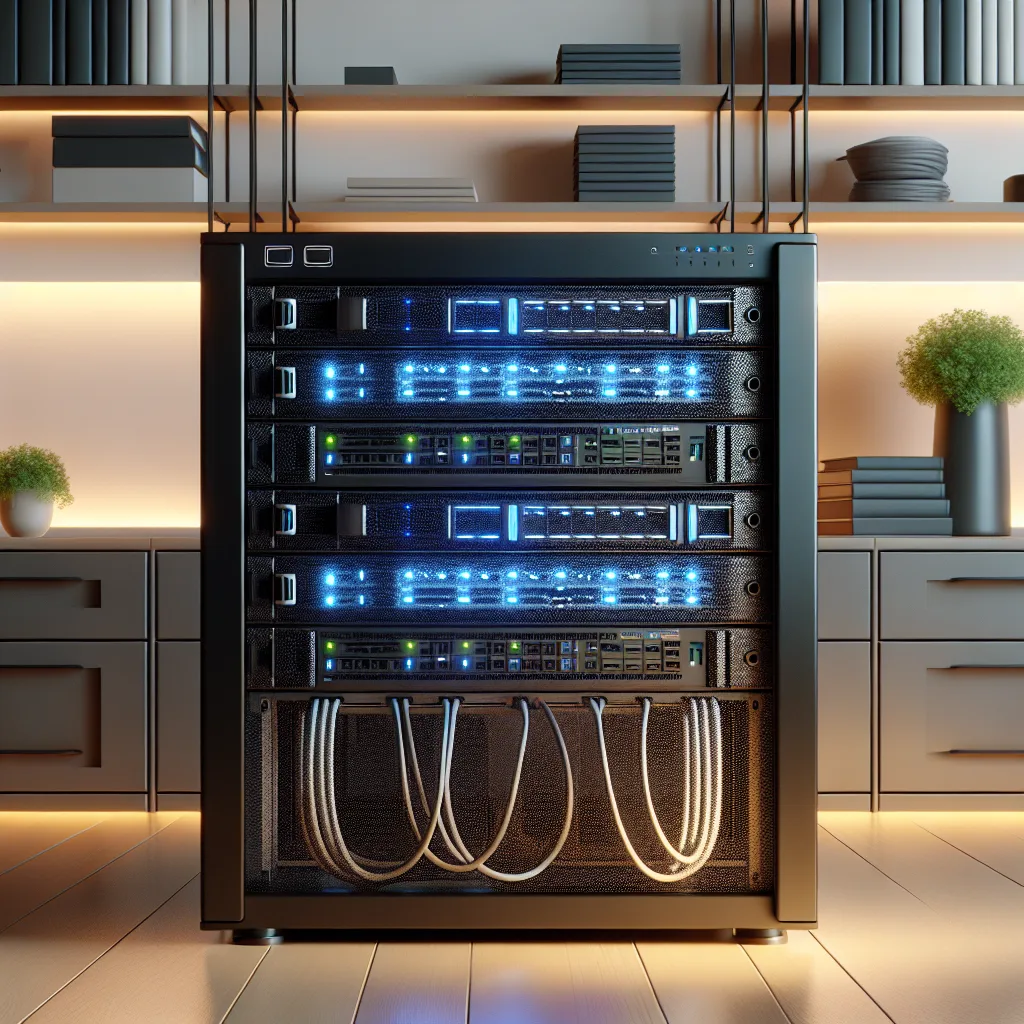Tired of that pile of PCs? It’s time to go vertical. Here’s how to choose your first home server rack and finally get organized.
If you’re anything like me, you’ve got a growing collection of computers. It starts with one, then you build a custom NAS for your files, and suddenly you have a dedicated gaming rig, too. The next thing you know, you’re staring at a pile of towers and a tangled mess of cables that looks more like a tech octopus than a clean setup. If that sounds familiar, you might be thinking about getting your first home server rack.
It’s the next logical step for any home lab enthusiast. A rack brings order to the chaos, centralizing your hardware into a single, neat, and surprisingly space-efficient tower. But where do you even begin? It’s not as simple as just buying a metal frame and sliding your computers inside. So, let’s talk through how to move your collection of PCs into a clean, professional-looking setup.
Why Bother With a Home Server Rack?
First off, why do this? It sounds like a lot of work. And it can be, but the payoff is huge.
- Organization: This is the big one. All your equipment lives in one place. Cables can be managed neatly, making troubleshooting a breeze.
- Space: It might seem counterintuitive, but going vertical saves a ton of floor space compared to three or four desktop towers sitting side-by-side.
- Airflow: Proper racks are designed for airflow. When paired with the right cases, you can create a much more efficient cooling path than a bunch of PCs crammed under a desk.
- It Just Looks Cool: Let’s be honest. A tidy server rack is the mark of a serious hobbyist. It’s immensely satisfying to see your hardware all racked up and blinking away.
Your First Big Decision: The Rack Itself
Before you buy anything, you need to understand two key measurements: rack height (U) and rack depth.
A “U” is a standard unit of measure for rack-mounted equipment, equal to 1.75 inches. A 2U server is 3.5 inches high, a 4U server is 7 inches high, and so on. For a home setup with a few machines, a 9U, 12U, or 15U rack is a fantastic starting point. It gives you enough space for your current gear plus room to grow.
Depth is just as important. Racks come in various depths, and you need to make sure your new server cases will actually fit. I’d recommend a rack with an adjustable depth or one that’s at least 30 inches deep to accommodate most standard components. For an excellent, detailed breakdown of all the specifications, check out this server rack buying guide from StarTech.
The Most Important Part: The Rackmount Chassis
Here’s the thing they don’t tell you: you can’t just put your ATX desktop case on a shelf in the rack. I mean, you could, but it defeats the whole purpose. The real solution is to move the guts of your computers into new cases called rackmount chassis.
Think of it as just another PC case, but in a different shape. You’ll take your motherboard, CPU, RAM, power supply, and all your drives and transplant them into this new rack-friendly enclosure.
A Rackmount Chassis for Every Need
For a setup like the one you’re probably imagining—a gaming PC, a NAS, and a workstation—you’ll need different types of chassis.
- For the Gaming PC & Workstation: You’ll almost certainly need a 4U chassis. Why? Because modern graphics cards are huge, and so are many CPU air coolers. A 4U case provides the vertical space needed to fit these tall components without having to switch to specialized, and often louder, low-profile coolers.
- For the NAS: This is where it gets fun. You’ll want a chassis designed for holding a lot of hard drives. A 4U chassis is still a great option here, as many have 8, 10, or even more 3.5-inch drive bays. This gives you plenty of room for all your storage and future expansion. Companies like SilverStone and Rosewill make some fantastic and affordable rackmount chassis that are perfect for these kinds of builds.
Putting It All Together: The Migration Plan
So you’ve got a plan. You know which rack and what chassis you need. What’s next?
- Build One at a Time: Don’t tear all your computers apart at once. Pick one, and perform the transplant completely before moving to the next. I’d start with the easiest one, maybe the workstation.
- Take Pictures: Before you unplug everything from your motherboard, snap a few photos with your phone. It’s a simple trick that can save you a huge headache when you’re trying to remember where that tiny “JFP1” connector goes.
- Mount and Manage: Once a PC is rebuilt in its new chassis, slide it into the rack. Don’t worry about perfect cable management yet—just get everything in place.
- The Final Polish: After all your machines are racked, dedicate some time to cabling. This is where the magic happens. Route your power cords to a power distribution unit (PDU) and your network cables to a patch panel. It’s the final step that separates a pile of hardware from a truly clean home server rack.
It’s a project, for sure. But when you’re done, you’ll have a setup that’s not only more functional but also a source of pride. You’ve tamed the chaos. Welcome to the club.
